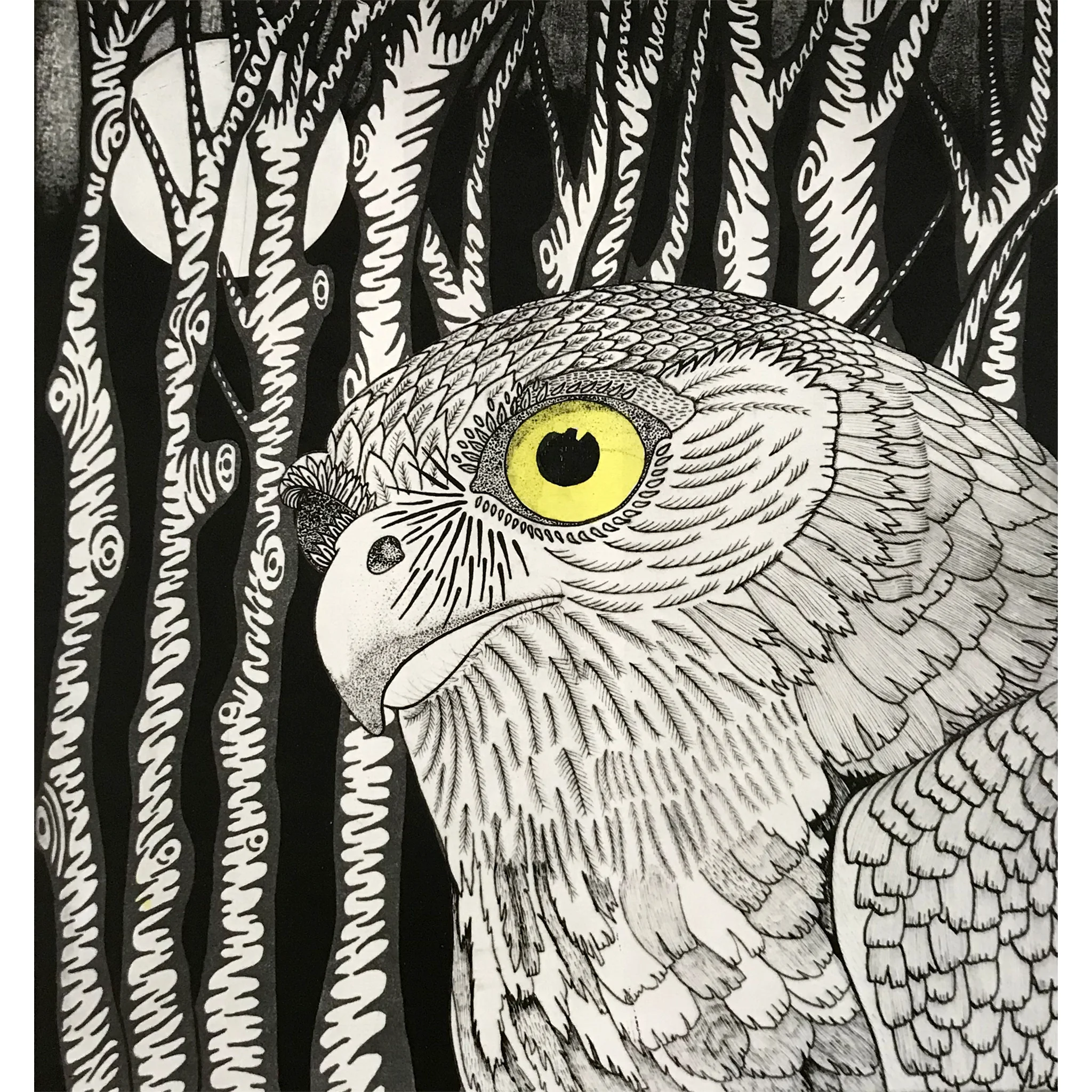Natural Collection - Exhibition
An exhibition of prints from the pages of the collaborative artists’ book, Natural Collection, featuring the work of twenty-nine Warringah Printmakers Studio artists. The images each show an artist’s view of the endangered and vulnerable wildlife and habitats of the Northern Beaches area of Sydney, NSW.
Title: That was I, you heard last night.
Media/Technique: Direct-to-Plate Photopolymer Etching, hand coloured with water colour. Magnani Incisioni 220gsm paper.
Image Dimensions: 30 cm by 28 cm (H by W)
I wanted to present the Barking Owl in its natural environment; at night and in woodlands. The owl in this image is hunting by the light of a full-moon, and has its eye firmly focussed on its prey. I love the contrast of black and white images and countering the simplicity of the colour palette with the complexity of detailed line work. I chose to use the photopolymer medium for the rich velvety black that it is able to achieve; this being vital to convey the darkness of woodlands at night. The owl and the trees were drawn separately using ink pens, they were then scanned, digitised and collaged digitally to create the composition seen in the image. The final image was printed onto a photopolymer plate using the direct-to-plate method. The only colour present in the artwork is that of the owl’s yellow eye; this being a defining feature of the species. One particular Barking Owl has been a regular at Narrabeen Lake for a number of years. There is a local urban-myth that the owl’s mate was killed by a pellet gun and that it is barking for its mate [1]. The title of my work is a reference to this owl’s pining.
[1] Personal communication with wildlife photographer Michael Hanvey.
Species Statement
Common Name: Barking Owl
Latin Name: Ninox Connivens
The Barking Owl is named after its distinctive call which sounds like the bark of a dog; a “woop-woop” call sounding more like a “woof-woof”. Growing to an average length of 40 cm and weighing 300-500 grams, the Barking Owl is referred to as a “Hawk-Owl” due to its facial features resembling that of a hawk rather than the distinctive heart-shaped face of the more commonly recognised “tyto-owls”, such as the barn-owl. This owl is also capable of making a much louder wailing sound, which was described by early settlers as the shrill screams of a woman being murdered; hence its other nick-name “Screaming Woman Bird”. It is native to Australia and parts of Papua New Guinea, choosing to occupy areas by lakes and rivers which provide the ideal breeding habitat such as large trees with hollows for nesting. The Barking Owl’s conservation status in NSW is “vulnerable”. Its population is distributed sparsely over NSW and its main threat in the Northern Beaches, as with other areas, are loss of habitat through clearing, fragmentation and degradation. Simply put; the species’ main threat is the presence of humans.
